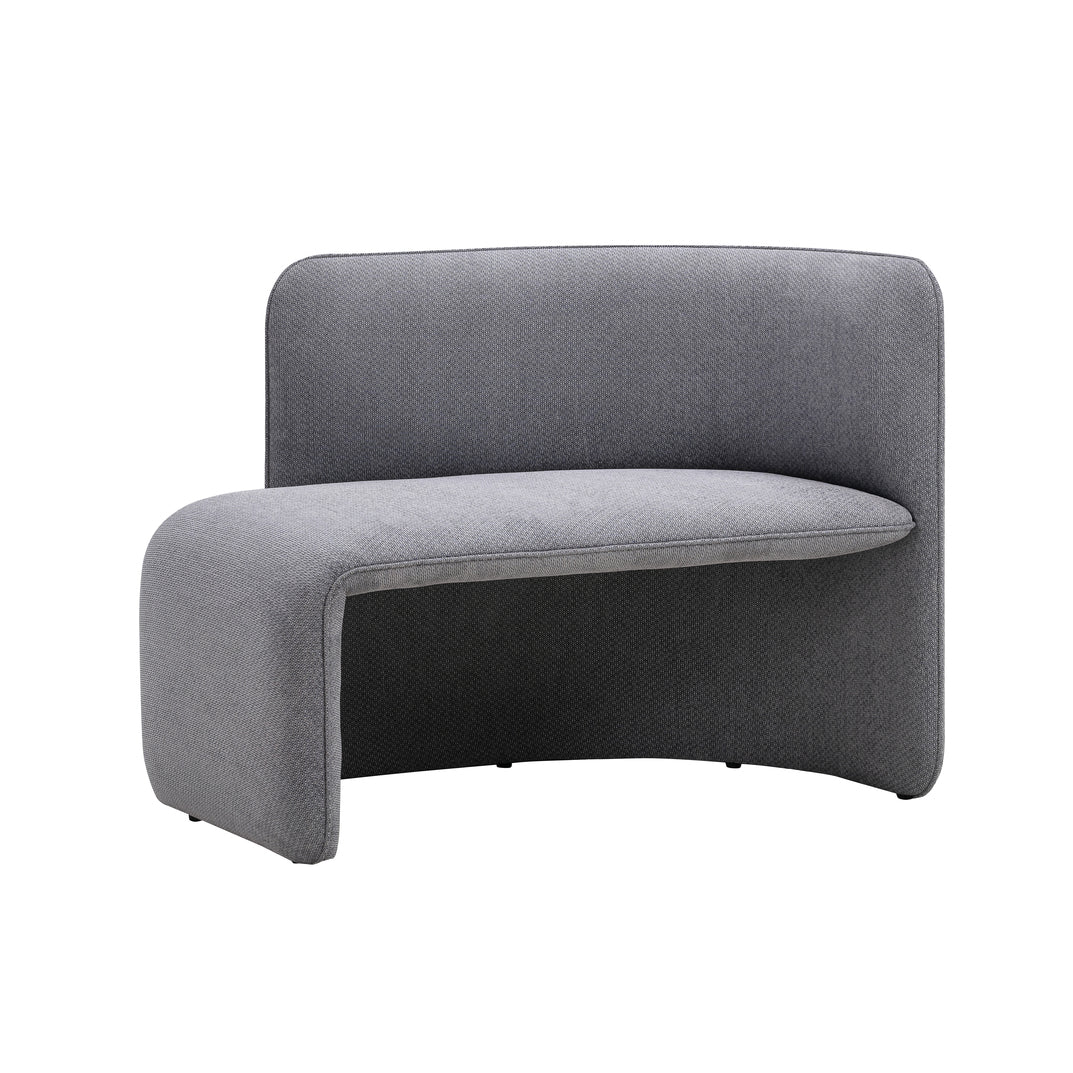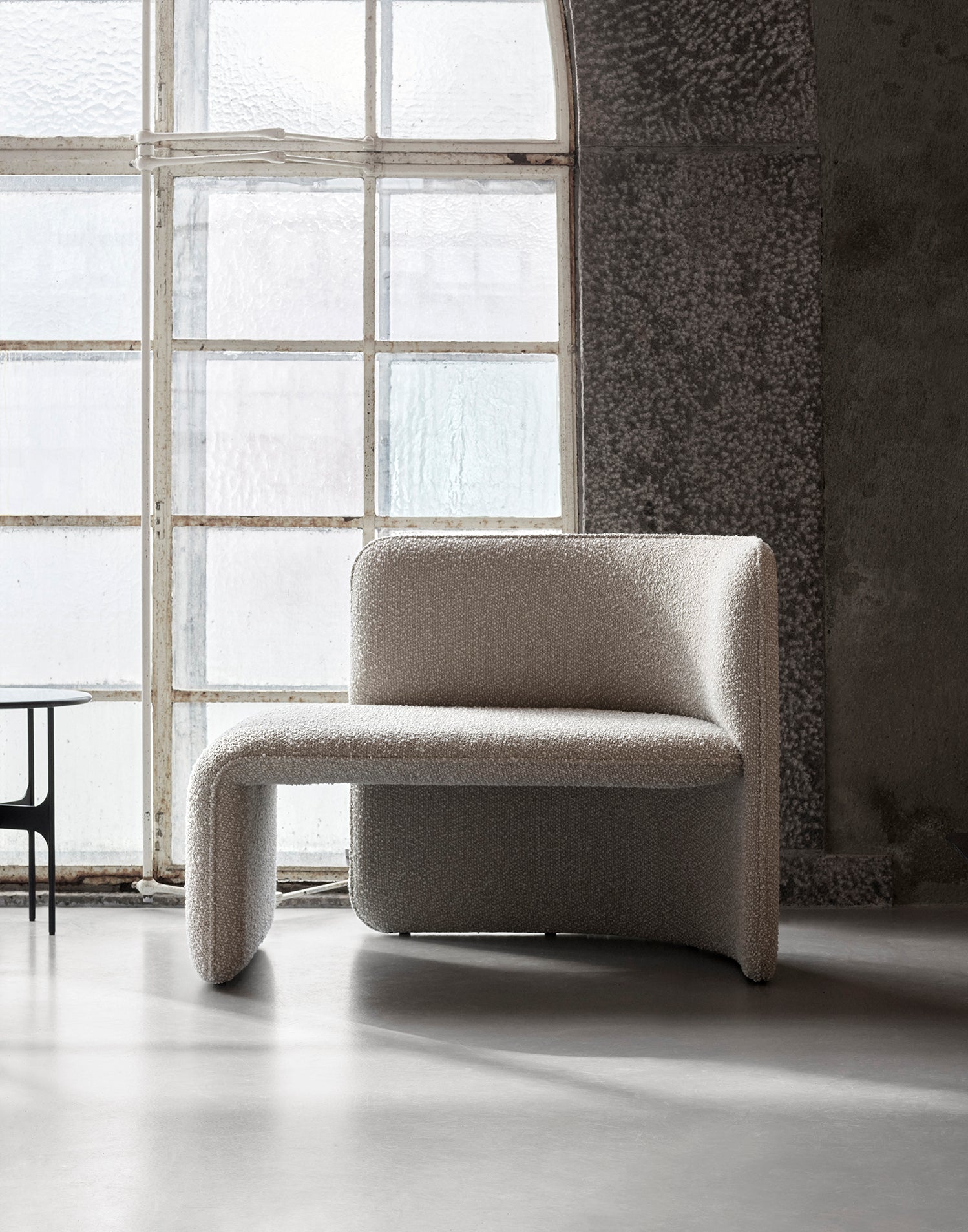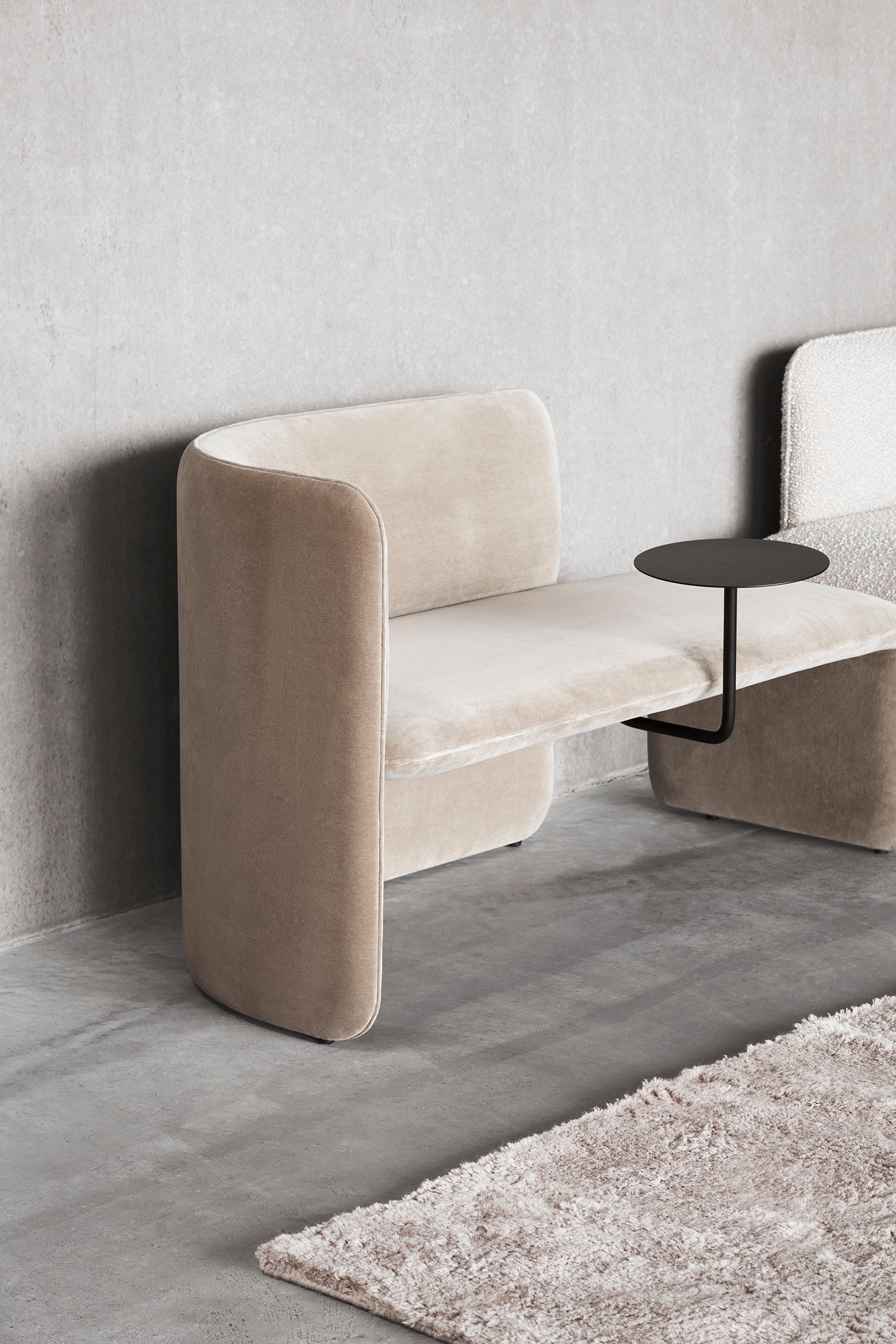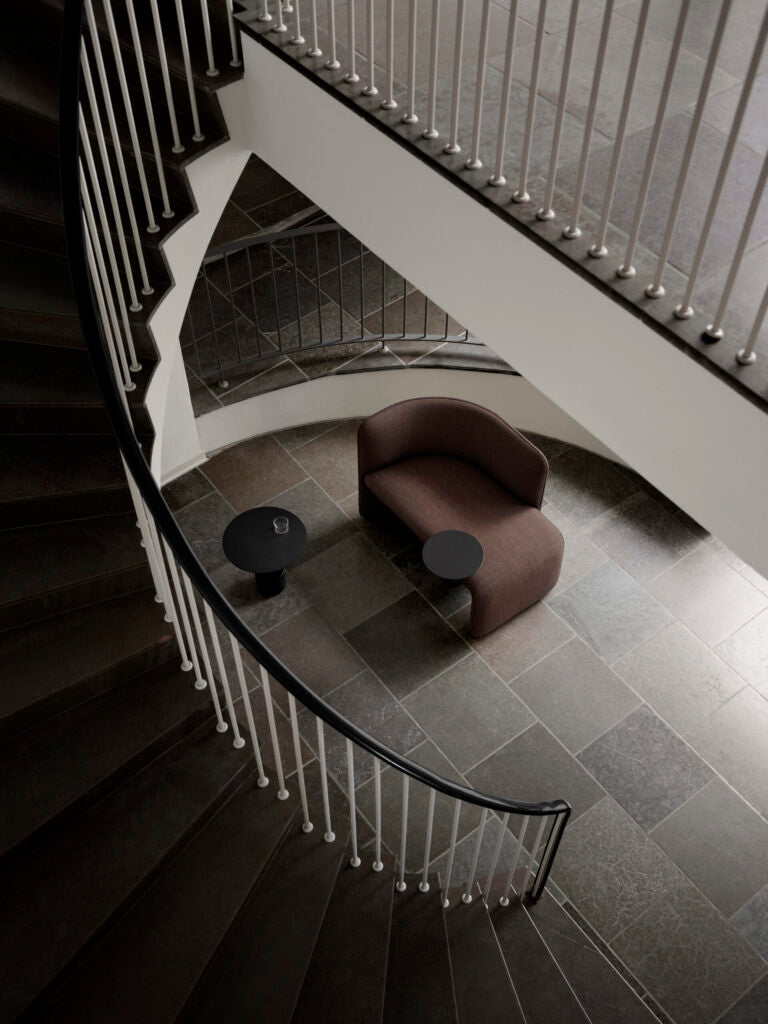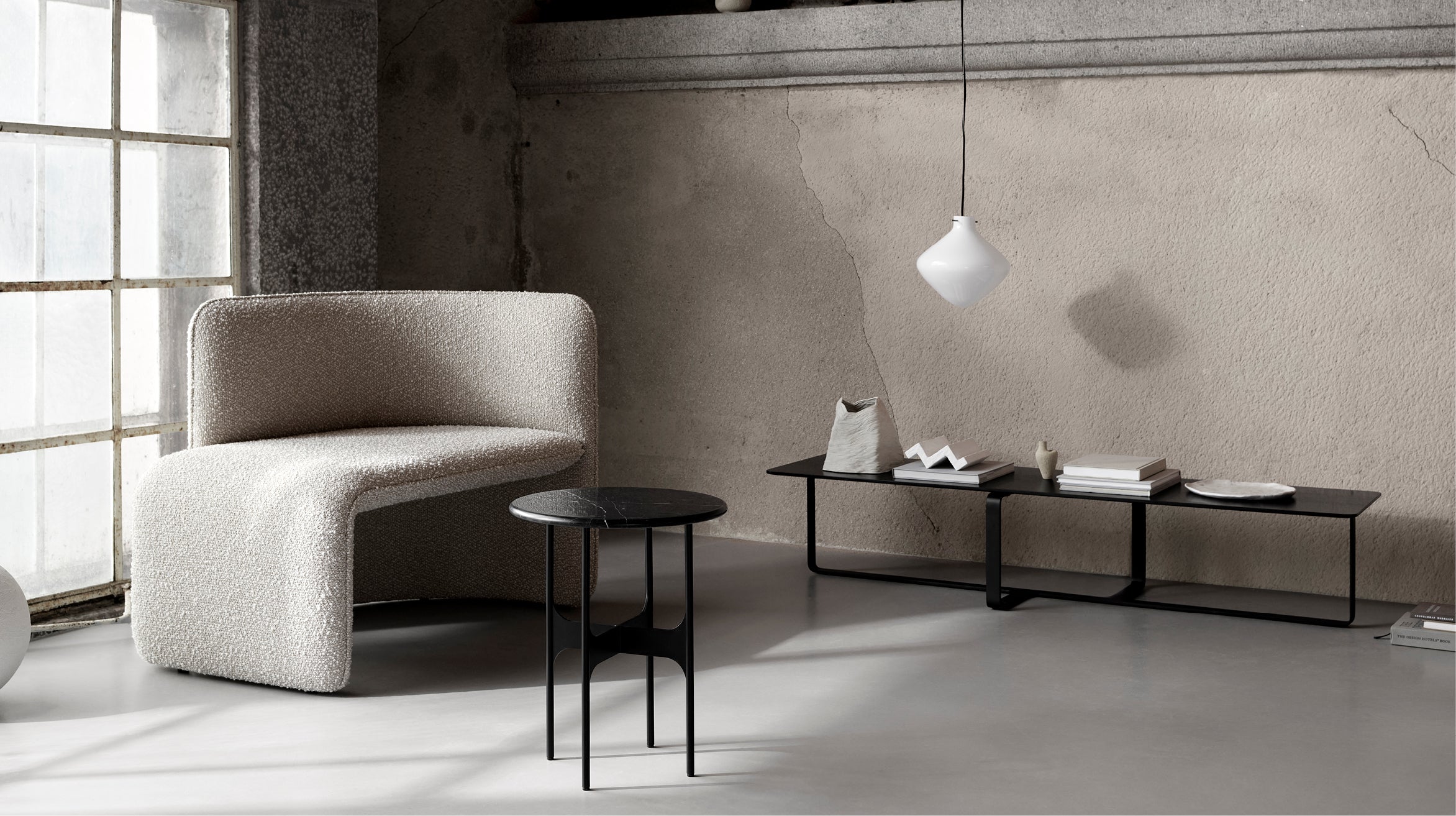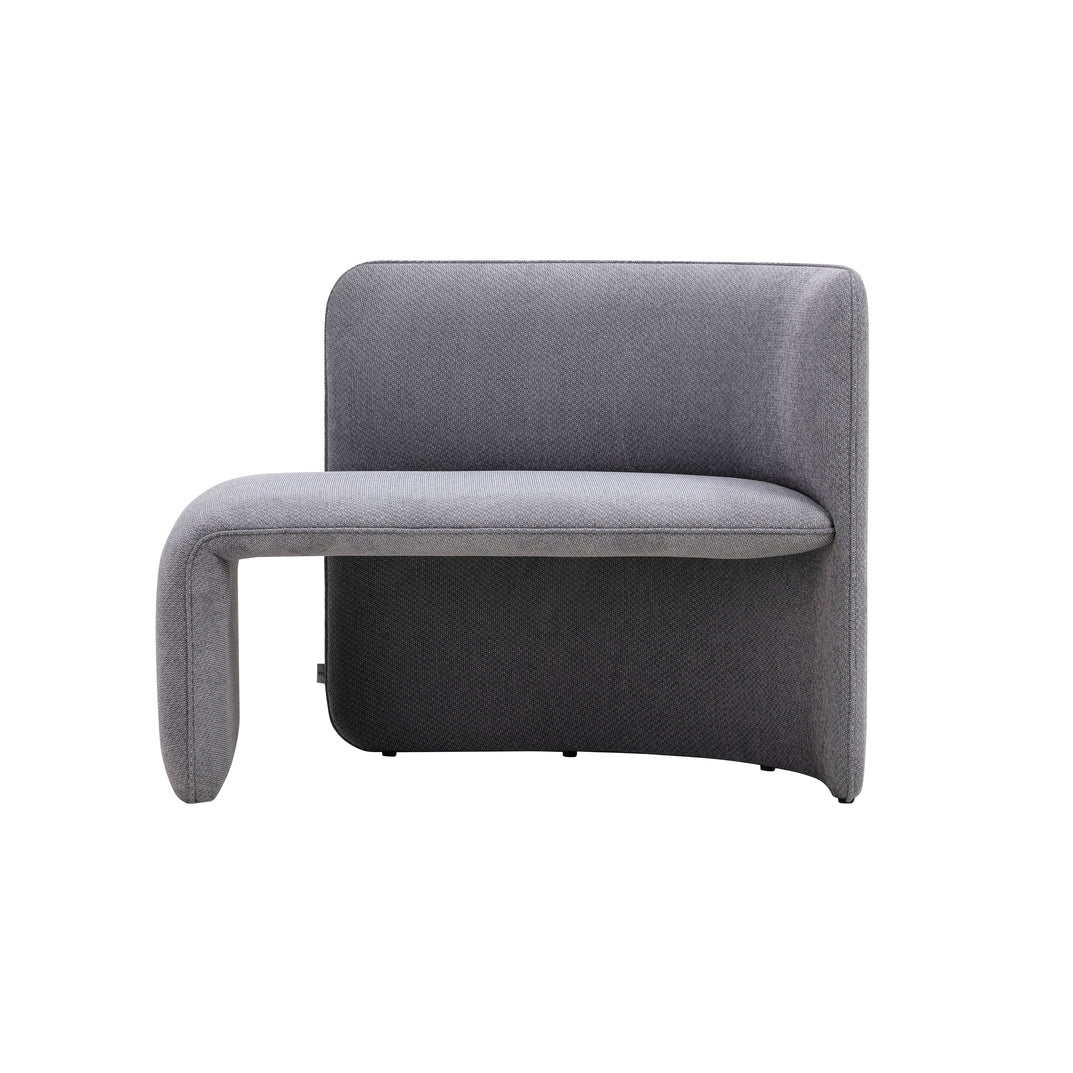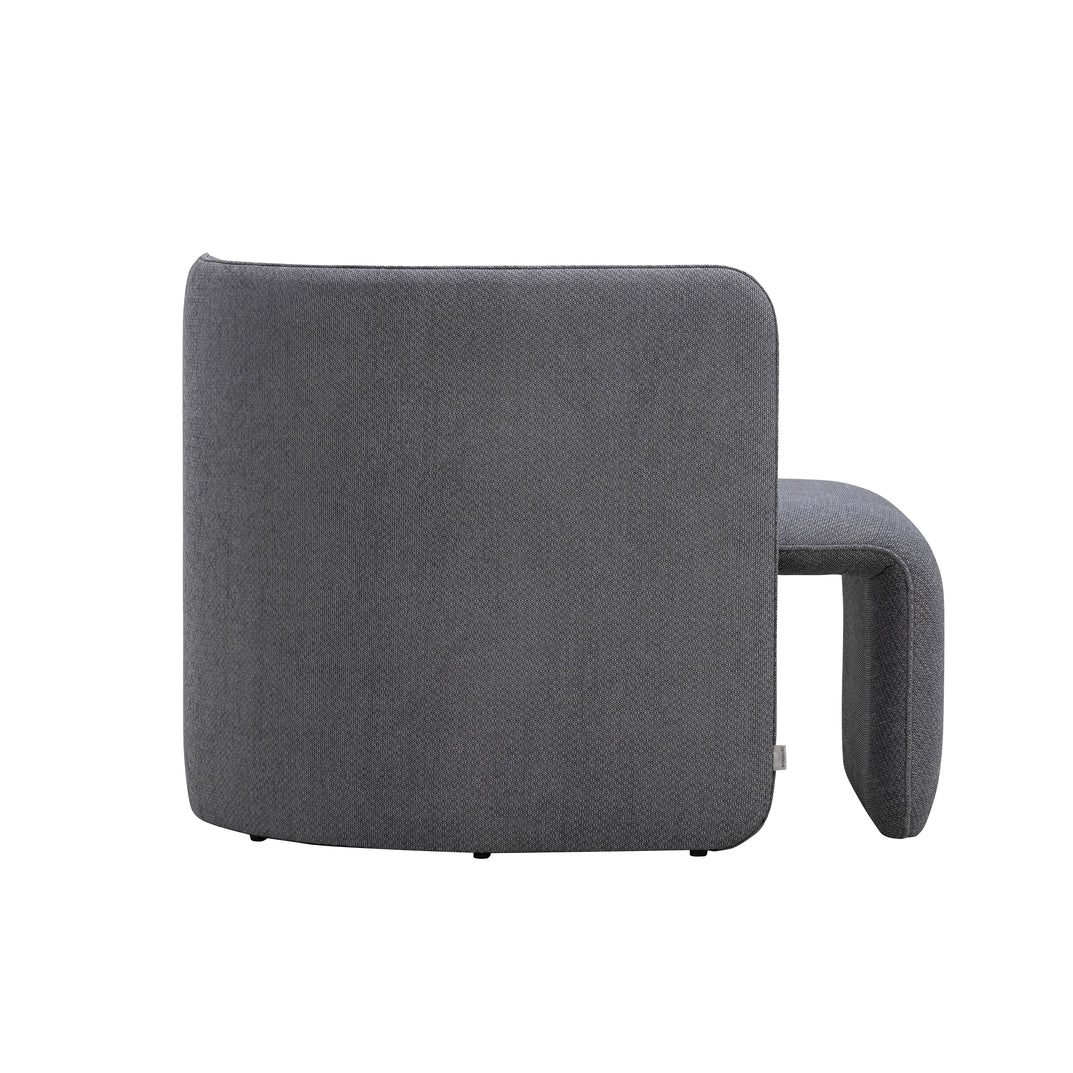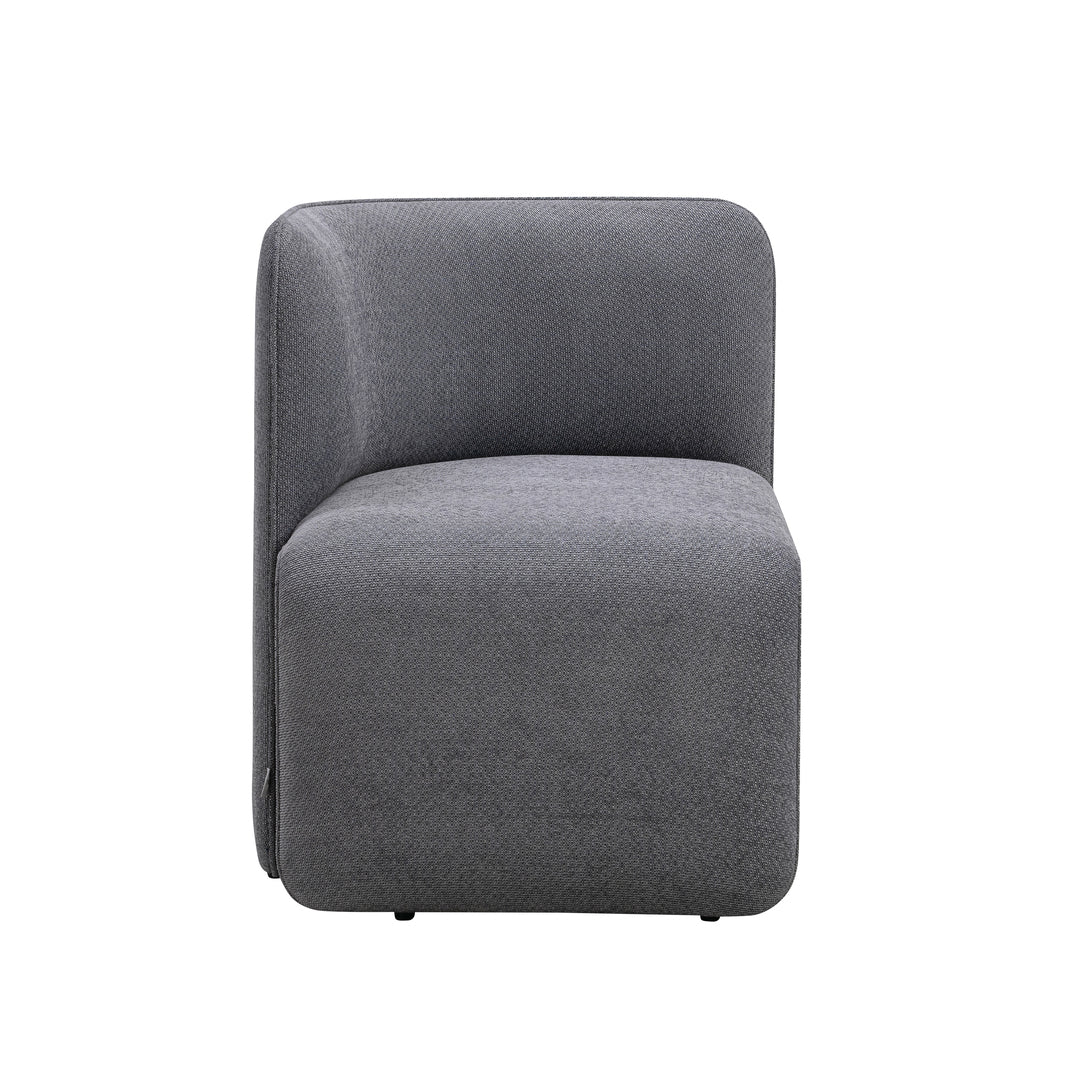When looking for a place to zone out for a while, get some work done, recharge ahead of a meeting or anything in-between: Look for the flowing lines of the Rest Bench, designed by German Sebastian Herkner. Bent, upholstered elements have been pieced together in an elegant harmony, offering a natural breathing space.
The design has a characterful persona with upholstered elements that bring a sense of softness to modern spaces, joined by the functionality of its curved back, allowing for the user to be seated at multiple positions, and the elegant side table.
The Rest Sofa Series is available in a range of variations. Explore the complete collection here.
148W x 67D x 81H cm
STRUCTURE INTERIOR
Frame made of solid wood, steel and MDF
STRUCTURE PADDING
High-resilient, variable density, polyurethane foam, with dacron padding
SEAT
High-resilient, variable density, polyurethane foam, with dacron padding
COVER
Fixed
LEGS
Rubber gliders
MOUNTED TABLE
Black powder-coated steel. The table can be mounted in either the middle or the side
It took the German designer Sebastian Herkner only a few years to convince the whole design scene of his talent with his unusual material mixes and timeless shapes, always managing to communicate an impression of sensibility. Today, he is contributing to the collections of the most important design houses worldwide and has won numerous awards for his design.
When designing everyday objects, Sebastian Herkner is influenced by his observations of people and their actions. In this context it is important to look beyond your own disciplines in order to achieve a value-added for the user. Herkner is not so much influenced by trends or current consumer criteria, because what interests him is a collage of simple techniques and traditional materials coupled with a simple mechanical principle and an unambiguous function. His idea of sustainability consists of employing traditional manufacturing techniques and their unique character. He then combines and interprets this by employing new technologies and finishing methods.










